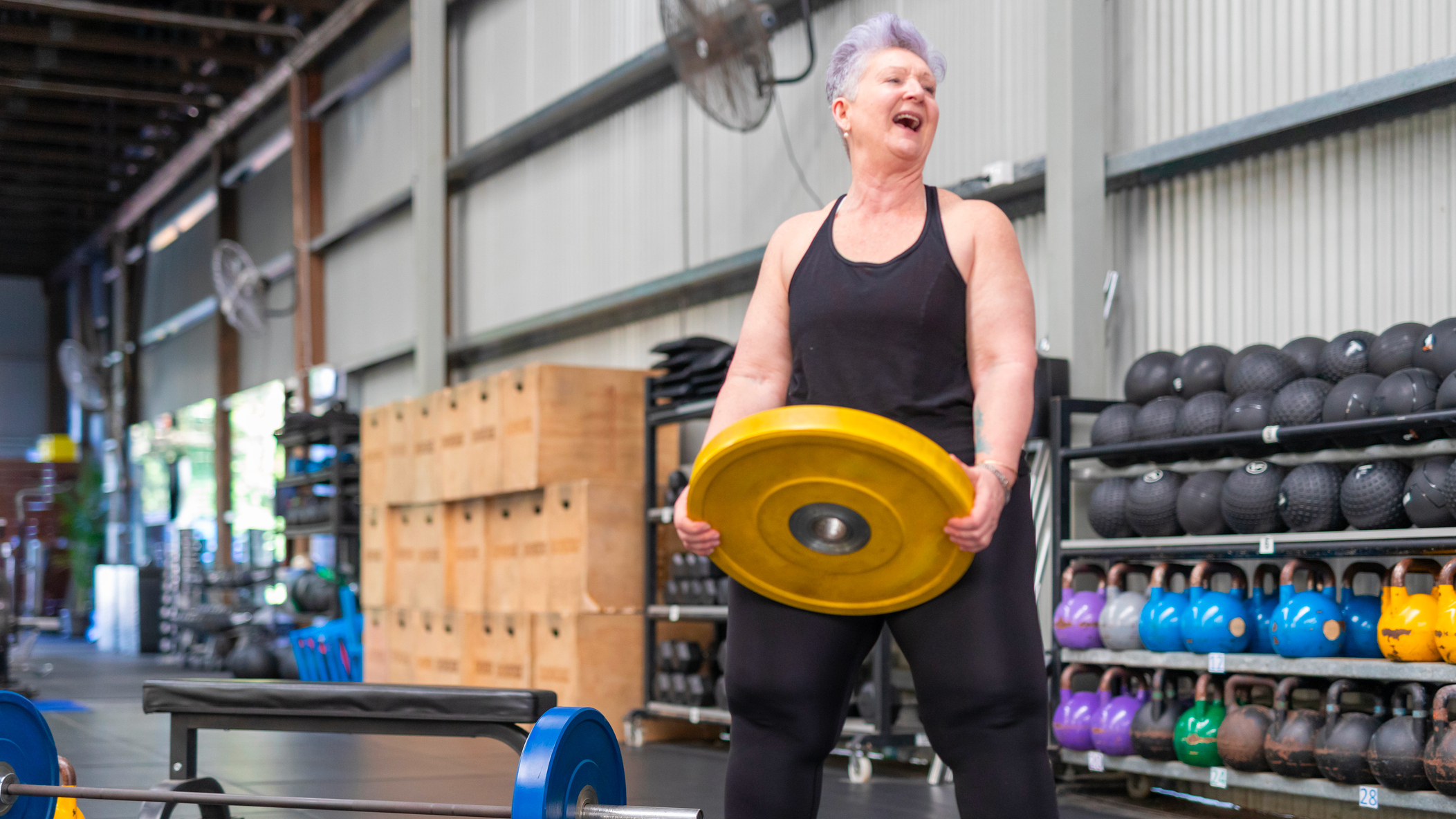
Everybody steadily ages over time, right? Well, perhaps not. New longevity research from Stanford University has revealed two distinct periods in our lives when the aging process accelerates—one at around 44 years of age and another at 60.
Thankfully, an expert in genetics and senior author of the study, Professor Michael Snyder PhD, says exercise can help mitigate against these spikes—and it's never too late to start.
The observational study, recently published in the journal Nature Aging, tracked molecular markers of aging among 108 participants (male and female) aged 25 to 75 for up to seven years, and noted shifts in how the body functions around these periods in our lives.
First, lipid and alcohol metabolism slows and the risk of cardiovascular disease increases during the transition in your 40s. Second, immune regulation and, again, carbohydrate metabolism shifts during the transition in your 60s.
"The one at 60 we did expect," Snyder tells Fit&Well. "We know the immune system declines. That's why you get vaccinated. We know muscle mass loss accelerates, known as sarcopenia. The skin changes. We also identified changes in kidney function, bladder function, carbohydrate metabolism, cardiovascular disease.
"What we didn't necessarily expect was the change in your 40s. We saw skin and muscle changes again, but we also saw lipid changes [increases in bad cholesterol], increased fat deposits, and changes in alcohol and caffeine metabolism."
One hypothesis, he says, is that people start getting more sedentary as they hit their 30s, which can catch up with them by the time they hit their 40s. "They might not be eating and sleeping as well as they could be either."
A lot of these changes in your 40s are avoidable, or at least "actionable", says Snyder. "Keep an eye on your cholesterol and lipid levels, for example. And maybe have one less alcoholic drink when you're out."
But, he says, the most effective step you can take to mitigate against these spikes in aging—both as you approach your 40s and 60s—is to start strength training.
"You want to keep your muscle mass up throughout your life because it really generates a lot of very useful hormones. They call them mitokines or exerkines, these molecules that are very beneficial for you."
Snyder, who recently turned 69, has himself been the subject of a research trial for the past 14 and a half years and shifted from running to resistance training seven years ago to help increase and then maintain muscle mass.
"I strength train for around 45 minutes per day," says Snyder. "I do heavy days and light days, mostly focusing on exercises around the shoulders and spine like overhead presses and squats. I lift pretty heavy weights so it does help build a lot of strength."
That regimen, supported by a balanced diet, helped him gain 10lb of muscle mass. Another happy side effect of increased exercise as you age is appetite suppression, which can help you manage your weight, he adds.
"Obviously you don't want to overdo it and you might need to lift slightly lighter weights in your 50s and 60s compared with your 30s and 40s, but you really should stay active your whole life. I'm a big believer in that," he says.
Now this latest research has reinforced Snyder's belief that everyone could do with keeping up with their exercise as they age, especially strength training. "Don't take it easy when you hit your 80s," he says. "That's bad advice. Keep hustling."
Follow this longevity expert's rules for healthy aging
- Keep active every day. Include some form of weight-bearing exercise with impact, such as walking or jogging.
- Build up to 20-30 minutes of muscle-strengthening exercise a day, such as Pilates or strength training with resistance machines or free weights.
- Focus on multi-joint movements that target multiple muscle groups and joints, such as squats, deadlifts, lunges, overhead presses and pull-ups.
- Reduce your intake of alcohol as you reach your 40s and again as you reach your 60s, when the body's ability to metabolize alcohol declines.
- Don't take it easy as you get older. You can modify the weights you lift and duration of sessions, but keep strength training to maintain your health.







